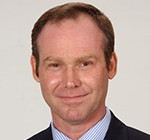This blog is part of a series of blogs linked with BMJ Clinical Evidence, a database of systematic overviews of the best available evidence on the effectiveness of commonly used interventions.
In an ideal world in which shared decision making is practised with impunity, healthcare providers need—at their fingertips—an appreciation and understanding of (as well as access to) the best available evidence for the main medical conditions they see on a day-to-day basis.
Unfortunately, for many clinicians, this lofty and worthwhile concept often becomes derailed early on in practice because one’s first experiences with evidence are:
1) Sheer boredom: Most of us have sat through seemingly endless epidemiology lectures on critical appraisal and pondered, “Is this what conscious sedation feels like?”
2) Sheer confusion: That complex undergraduate statistics course you barely passed that bore little resemblance to anything remotely practical.
3) Sheer frustration: There are 100s of “evidence based” clinical practice guidelines which are sometimes longer than War and Peace; and you hear that to keep up with the medical literature you need to read for 21 hours a day, and you have never had that much free time in one month, let alone a single day!
Given these experiences, often the only realistic solution for the frontline healthcare provider is to find reliable evidence sources they can trust that present evidence that is:
1) Succinct—anything more than a few hundred words is likely too long.
2) Relevant—addresses the dozens of common clinical questions seen everyday in primary care.
3) Specific—presents benefits and harms in similar ways. Risk/benefit/harm tools need to be practical and allow for an estimate of baseline risks, the potential benefits and harms associated with treatment, as well as some idea of the cost and inconvenience associated with these treatments.
4) Lacks an agenda—is as non-encumbered from financial and ideological (mechanistic theories) influences as possible. It sounds strange, but ideally the authors should not care what the evidence shows.
5) Engaging—presented in an interesting way—practical, along with humour and a dollop of healthy scepticism.
You then mix the above with a few common sense principles such as:
1) A new treatment is rarely much if any better than what we already have.
2) Do a test only if the result could change what you would do.
3) Unless the condition is immediately life threatening start with low doses.
4) You can’t make an asymptomatic patient feel better.
5) When baseline risk is low, reducing risk rarely amounts to meaningful gains.
6) You can almost never reduce a risk to zero.
7) Physical activity, nutrition and not smoking are almost always more effective. than any treatments we can provide.
8) We are all dead at the end.
Using many of the above principles and concepts, over the years we have developed a variety of evidence “sound-bytes.” Our overall goal has always been to make evidence accessible, understandable, interactive, and fun. Examples include:
1) Tools for practice: A biweekly, purposely brief (300 words), free article summarizing medical evidence focusing on topical issues and practice modifying information – >130 articles to date.
2) Best Science (BS) Medicine Podcast: A series of 30 minute podcasts featuring a discussion between a family physician and a clinical pharmacist about the best available evidence around numerous general practice topics (e.g. diabetes, pneumonia, depression), a number of series on topics like polypharmacy, nutrition, plus a monthly look at new studies. All of these topics are discussed with healthy scepticism and odd humour undertones. The BS medicine podcast, according to iTunes is in the top 10-20 medical podcasts in most countries and is one of, if not, the top general practice podcast worldwide – >260 podcasts to date.
3) Absolute CVD Risk/Benefit Calculator: An interactive and individualized cardiovascular risk calculator which provides an absolute estimate (%) of a person’s chance of having a cardiovascular event over a specific period of time and an idea of the potential benefit and harms of treatment. The top 3 risk calculators are presented—Framingham, QRISK2 and ASCVD.
4) Educational music videos: One of us (someone with obviously too much time on their hands) uses popular music to get across the concepts of shared decision making, critical appraisal, CVD risk numbers, polypharmacy, nutrition, choosing wisely, overdiagnosis – 9 videos in total.
5) How to critically appraise an RCT in 10 minutes: A free interactive iBook that describes the steps involved in doing a quick but fairly thorough critical appraisal of an RCT.
Many clinicians find incorporating evidence into their practice a daunting task. However, there are many groups and resources available for busy clinicians that provide useful evidence summaries and synopses. Armed with this, and a basic understanding of a few evidence principles, evidence based practice is achievable for everyone—and can actually be empowering and fun!
James McCormack is pharmacist and professor at the Faculty of Pharmaceutical Sciences at the University of British Columbia and works on translating and disseminating knowledge in marginally clever and innovative ways.
Mike Allan is a family physician, professor, and director of EBM in the Department of Family Medicine in the University of Alberta. With the Alberta College of Family Physicians he works on a number of evidence and knowledge translation projects.
Competing interests declarations:
James McCormack: I have read and understood the BMJ policy on declaration of interests and declare the following interests:
1) Best Science Medicine Podcast—75% of the podcasts are free but we have a paid premium membership that allows users to access all the podcasts.
2) I do many continuing education talks and occasionally get paid for these sessions. None of the talks have any with industry affiliations.
G Michael Allan: I have read and understood the BMJ Group policy on declaration of interests and declare the following interests:
1) Best Science Medicine Podcast—75% of the podcasts are free but we have a paid premium membership that allows users to access all the podcasts. No industry affiliation.
2) I do many continuing education talks but receive no honorarium myself. No industry affiliation.
3) I have received a grant from a non-profit source (Alberta Medical Association) and chaired a “simplified lipid pathway.” No industry affiliation.
4) I am on the Canadian Cardiovascular Society dyslipidemia guideline: this is unpaid. I do not know of any industry affiliation.
5) I have received grants from the Alberta College of Family Physicians for knowledge translation including Tools for Practice, traveling CME events and a large primary conference. Honorarium and revenue generated from the program (via talks, external grants, etc) goes back into the program. No industry affiliation.
6) I am involved in an academic detailing program that receives supporting funding from involved primary care networks. No industry affiliation.
7) I do not receive personal income of any kind from any of the above.


